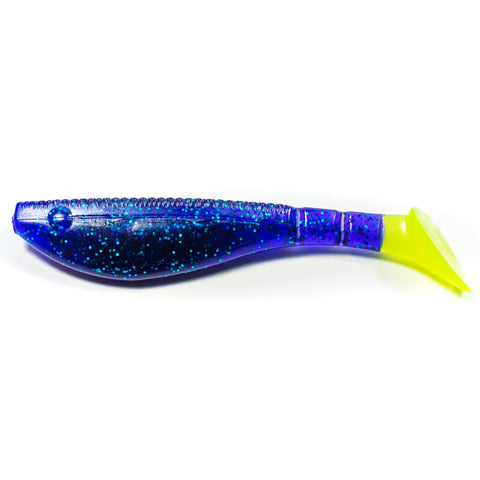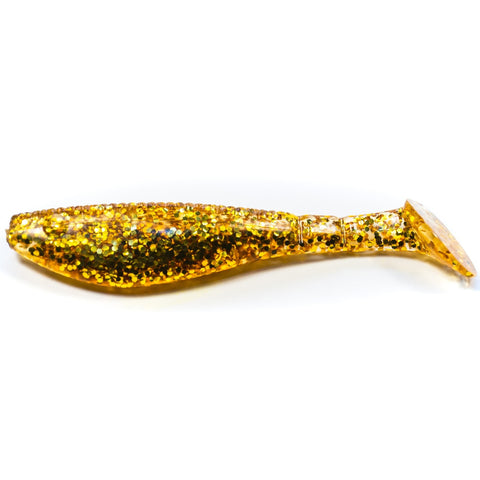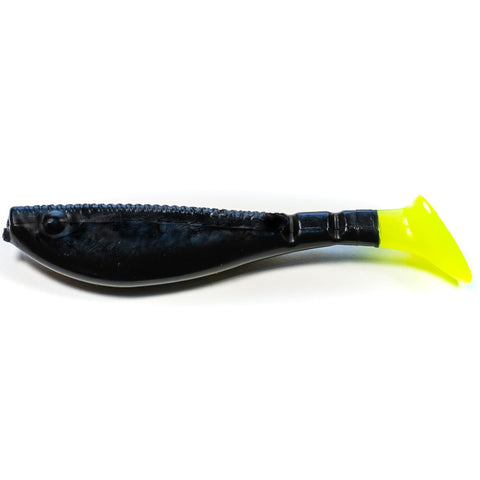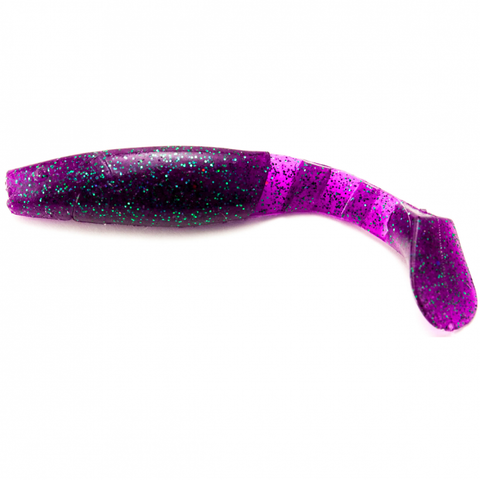
Caudal Fin Throttle Fin - An Article on the Different Types of Caudal Fins and How Fish Use Them
Sessile vs. Motile. The distinction between these two words separates large taxonomic units in the world of biology. To be sessile is to be fixed to something or unable to move freely throughout the environment. Some examples of these being sponges, coral polyps, or barnacles. On the other hand, to be motile is to have the ability to move freely, and on one’s own accord, throughout its environment. Motility in aquatic organisms is synonymous with the term “free-swimming”. Motility in fishes is exactly what makes catching fish so much fun. Yes – I know, I just gave about the most technical and scientific way to say “fish swim”. We all know this, but it’s HOW they swim, and what they use to accomplish the task of swimming that gets interesting.
Enter the caudal fin, better known as the tail fin. Here we have the culprit for every heart wrenching snapped line and straightened hook. The caudal fin is the reason we fishermen enjoy fishing – the thrill of the fight. We are addicted to the caudal fin.
Evolutionarily, caudal fins have diverged into a plethora of shapes and sizes, all lending themselves to different aquatic environments. You need not be too keen to notice the differing caudal fins on various recreational species. Tuna caudal fins ≠ speck caudal fins, because, ecologically that would make no since. A tuna with the back end of a speck wouldn’t last very long in the open ocean.
Below, I have created an abbreviated description of some of the more common caudal fins that exist on some of your favorite recreational species, along with an ecological description of why these caudal fins are advantageous. This is NOT an exhaustive list of all caudal fin morphologies, so if you deem this information worthy of your own independent research, then I guess I have done my job. Here we go:
Google Images of each caudal fin can be referenced here
Truncate to Semi-Truncate and Emarginate
(Northern Gulf and bass anglers, this section is for you.)
Families: Sciaenidae (Drums), Lutjanidae (Snappers), Serranidae (Groupers), Centrachidae (Sunfish)
Common Examples: Redfish, Speck, Croaker, Black Drum, Groupers, Snappers, Largemouth Bass (more emarginate)
Ecological Description: This broom-like caudal fin is used for quick acceleration and offers high maneuverability. The large surface area can displace large amounts of water and is best used in ambushing prey; however, broad caudal fins are not built for sprinting. Found primarily in ambush predators that don’t chase down prey. Truncate caudal fins can be found in many benthic (bottom-dwelling) fishes. Primary prey items include crustaceans, prey fishes that also have truncate caudal fins, other benthic fishes, and carrion.
Lunate
(Trollers, this is your section.)
Families: Scombridae (Mackerels and Tunas), Xiphiidae (Swordfishes), Istiophoridae (Marlins)
Common Examples: Blue Marlin, White Marlin, Yellowfin Tuna, Bluefin Tuna, Spanish Mackerel, Kingfish
Ecological Description: BUILT FOR SPEED! These thin, crescent-shaped caudal fins allow for great speed over long distances and are most often seen on fishes that live in open water. The thin fin allows less drag at the posterior end of the fish, which allows for fast-paced, long-distance swimming. Most fish that possess a lunate caudal fin are highly migratory species. These lunate caudal fins do not allow for high maneuverability, and thus, these fishes are almost exclusively piscivorous (fish eating). I should note that the prey items sought by these fishes also possess lunate caudal fins, and are equally as ill equipped at tight maneuvering, so you can imagine an arrow-straight pursuit of predator and prey during a feeding scenario. That’s why straight trolling is such an effective technique for catching these species. That’s a pretty neat example of an evolutionary arms race. Speed kills…literally.
Forked, Emarginate-Forked, and Forked-Lunate
(Floridians, you’re up! As well as other tropical anglers.)
Families: Carangidae (Jacks), Megalopidae (Tarpon), Albulidae (Bonefish)
Common Examples: Permit, Crevalle Jack, Giant Trevally, Black Jack, Amberjack, Tarpon, Bonefish
Ecological Description: Open water fish that don’t rely as much on speed for protection and feeding, but tend to swim constantly and over long distances, have a forked tail. Fish that possess a forked caudal fin often use ambush-like prey capture techniques similar to fish that have a truncate caudal fin, but also swim great distances at high speeds similar to those fish possessing a lunate caudal fin. These fish are somewhere in the middle of the two aforementioned groups. Primary prey items include schooling fishes and free-swimming crustaceans, and more specifically free-swimming crabs; however, there are several species possessing a forked caudal fin that feed on benthic crustaceans.
There are always exceptions to the rule, and when it comes to caudal fins there some interesting deviation from these general classifications and their respective ecological descriptions. For instance, permit have a forked-lunate caudal fin, however, their primary prey sources are bottom-dwelling crustaceans. This is contrary to other forked caudal fin species listed, as they primarily feed in open water. These hybrid caudal fins, and those species that deviate from the general rule are truly the most interesting. Can you think of any examples of fishes that deviate from their classification? Can you think of any hybrid caudal fin types?
A final thought. I referred to the term ‘evolutionary arms race’ while discussing the fact that prey items of fishes possessing lunate caudal fins most always have the same caudal fin themselves. The evolutionary arms race plays out most notably in pelagic fishes, but, to some degree, you can see this evolutionary arms race playing out in every group that we have discussed. For instance, many schooling fishes that Tarpon prey upon also have a forked caudal fin. Can you think of anywhere else that this evolutionary arms race might play out?
Thanks for reading! If you enjoyed the read, subscribe to our newsletter. Be sure to check out our shop, and don’t forget to follow us on Facebook here (Boca Chica Bait Company), Instagram here (@bocachicabaits), and Twitter here (@bocachicabaits).
Thanks for reading and tight lines,
Taylor – Founder of Boca Chica Baits




